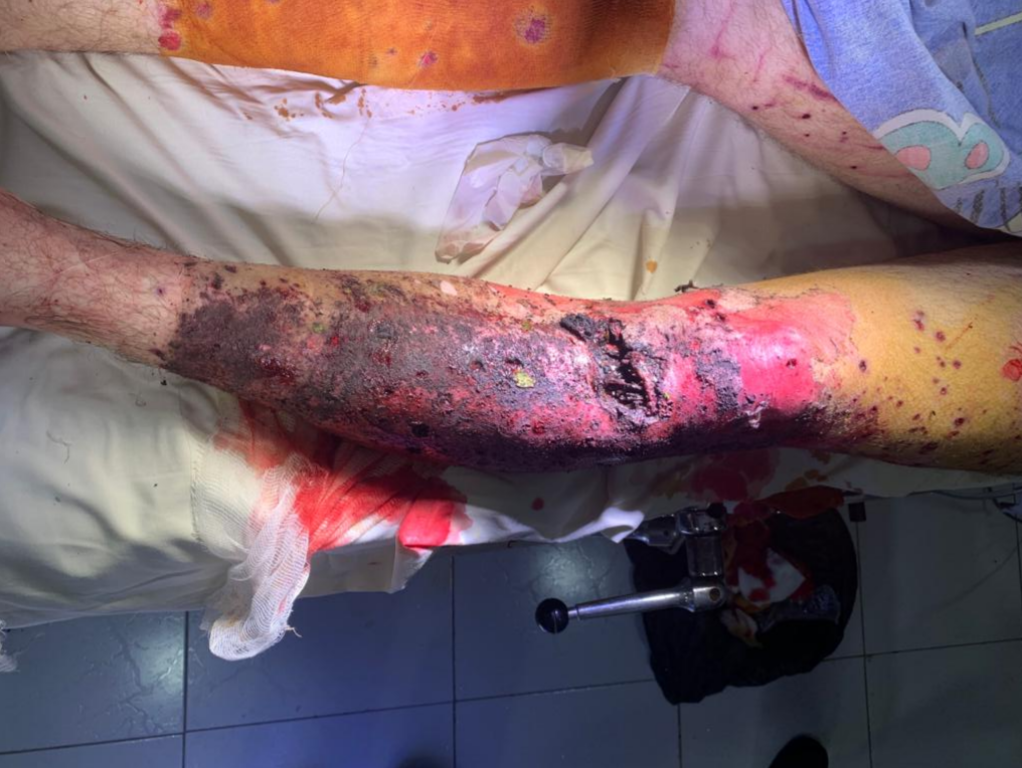Confirmed by evidence: Azerbaijan did use white phosphorus in Artsakh
The state authorities of Armenia and Artsakh reported in late October that during the war in Artsakh the Azerbaijani side used munitions containing elements of chemical weapons (white phosphorus), which are banned by international conventions. The Defense Army also published a video.
On November 6, the Human Rights Defenders of the Republic of Armenia and the Republic of Artsakh published a joint report in English stating that weapons containing chemical elements were used by Azerbaijan between October 29 and 31. “It is not clear whether it was white phosphorus or no. However, considering the reported effects both on the natural environment and the population of Artsakh, it can be considered that the caused damage was in any case destructive,” the report reads.
By gathering the available evidence, the Fact Investigation Platform tried to figure out whether Azerbaijan used white phosphorus in Artsakh.
Use and effects of white phosphorus
White phosphorus is a weapon of mass destruction, the use of which is prohibited by the Geneva Conventions. During combustion it can produce temperatures above 800°C, and has a pronounced white smoke.
There are several types of phosphorous weapons that can be used in artillery or mortar shells, aerial bombs, missiles, hand grenades or portable launcher grenades, and etc. It should be noted that the purpose of phosphorus use varies depending on the type of weapon. For instance, it can be used to cover the area with smoke. However, the most dangerous type are the incendiary weapons, which are seriously detrimental to people in the area, nature and civilian infrastructure. The harm caused to humans by phosphorus can range from burns to fatal poisoning. The joint report of the Human Rights Defenders of the Republic of Armenia and the Republic of Artsakh contains photos of people seriously injured as a result of the use of phosphorus munitions by Azerbaijan. Below we present one of them.
In all likelihood, white phosphorus was first used during the First World War. It has been actively used in recent decades as well. In 2004-2005, US forces used white phosphorus in Iraq. According to various sources, white phosphorus was used in the Arab-Israeli conflict, in Afghanistan, and in the Syrian war (by the Syrian government, Russia, Turkey and the United States).
The likely use of white phosphorus in Artsakh
According to official sources, evidence of the use of weapons containing white phosphorus in the Artsakh war is being studied. However, a detailed study of the videos and a comparison with the already confirmed sources and evidence clearly indicate that a weapon containing white phosphorus was used in the forests of Artsakh.
White phosphorus combustion has three main features:
- heavy white smoke;
- fire changing from bright yellow to white;
- Crackling during combustion.
The photo shows an excerpt from a video shot by Bars Media on the northern border of Artsakh, in which all three features are visible.
In April 2013, a truck carrying white phosphorus crashed in Wuhan, China. The photo below shows the fire caused by that accident and a shot from the video published by the Defense Army. Both photos show two of the three features of burning white phosphorus: a bright yellow to white fire, and heavy smoke.
Apart from white phosphorus, the Fact investigation Platform was not able to find any other mention of the use of weapons with similar burning features.
Video evidence from Artsakh
Bars Media has provided Fip.am with extensive footage of forest fires, which can prove the use of weapons containing white phosphorus in the northern regions of Artsakh. The video shows combustion with crackling, which, as mentioned above, is one of the main features of the burning white phosphorus.
Upon contact with oxygen, phosphorus begins to burn, producing thick white smoke. The absence of other combustible substances on the soil layer suggests that the heavy, white smoke is a result of a chemical weapon use in the area.
The next video also shows the smoke from the burning material on the ground.
The photo shows pieces of phosphorus falling, probably as a result of the use of artillery.
Comparison with previous cases
Comparison of the available visual evidence about the possible or confirmed use of white phosphorus in other places and evidence about its possible use in Artsakh suggest that weapons containing the same chemical element (white phosphorus) were used.
In the video published by the RA Ombudsman Arman Tatoyan, you can see evidence of the use of white phosphorus in Syria in 2016-2017. It should be noted that the use of this weapon in Syria has been confirmed by international organizations. In the video published by Tatoyan, pieces of phosphorus fall from the sky, probably after a fire by an aircraft or a drone. This refutes the claim of the Azerbaijani side that this is the burning of the white phosphorus reserves stored in the forests of Artsakh.
Location positioning
On November 6, the Ombudsman of Armenia Armen Tatoyan mentioned that the weapon of mass destruction was used in the territories of the settlements. Among them are the communities of Nngi, Sghnakh, Aknaghbyur, Taghavard, Togh, Karin Tak, the forests of which are located in the immediate vicinity of the settlements, up to 100 meters away.
The Earth Observation website has the latest satellite photos of the area as of October 31, which most likely show smoke from white phosphorus. The second photo shows the consequences of its possible use in the northern section of Artsakh. By the way, the videos of Bars Media were made in the north.
In conclusion, we can state that the combination of information available in open sources confirms that Azerbaijan has used banned white phosphorus munitions in the forests of Artsakh.
Ani Avetisyan
Hovhannes Nazaretyan

 FACTOMETER
FACTOMETER















